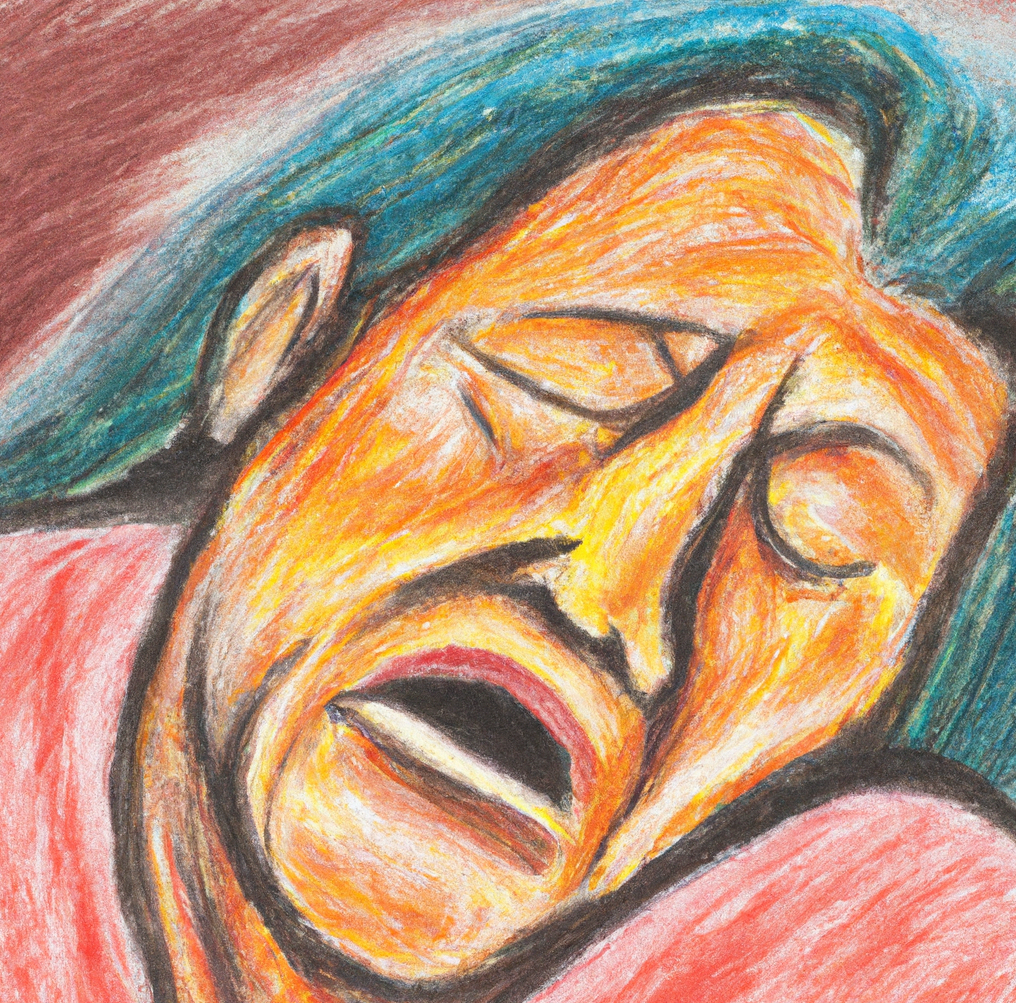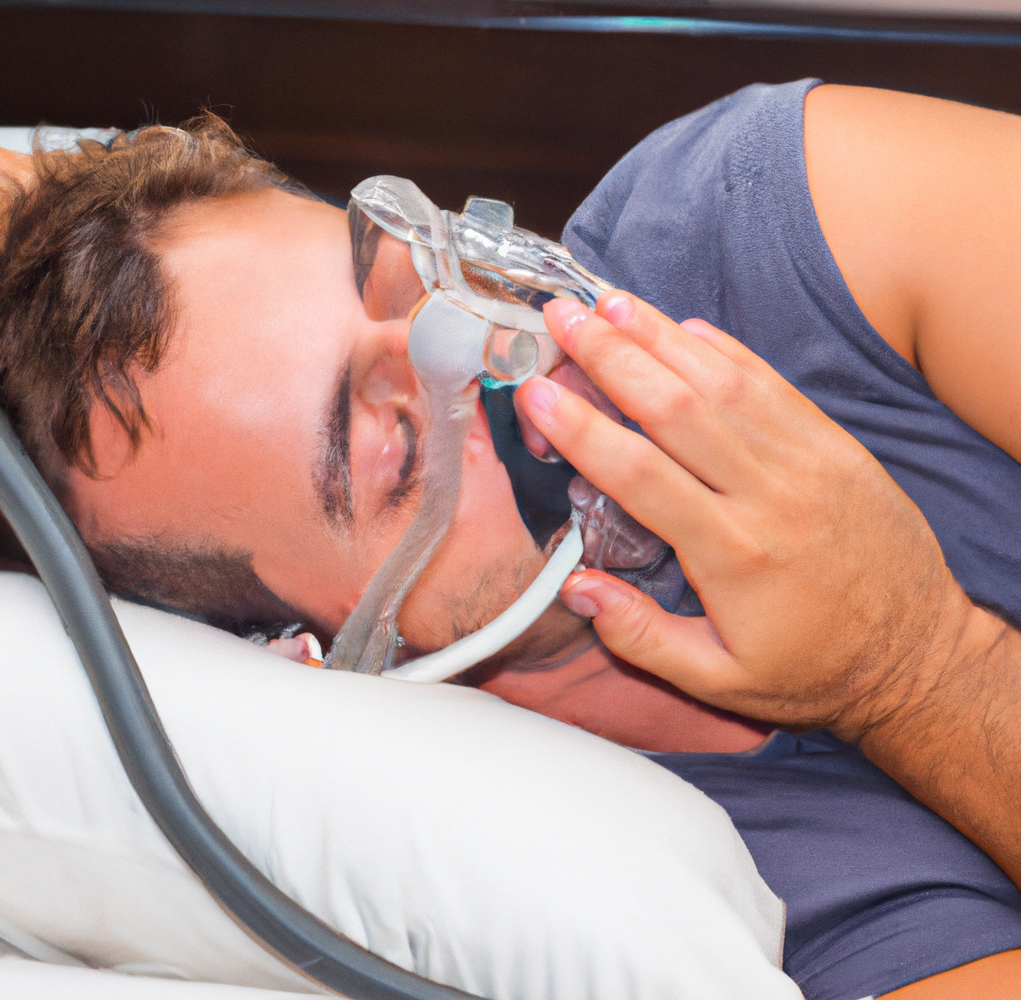What is Sleep Apnea?

Sleep apnea is a sleep disorder characterized by repeated pauses or interruptions or shallow breathing during sleep. These pauses can last for several seconds to minutes and may occur 30 times or more an hour. Normal breathing typically starts again with a loud snort or choking sound, causing the individual to wake up briefly to reopen the airway.
These awakenings are often so short that people don’t remember them but can happen hundreds of times a night. It is a chronic condition that leads to a drop in blood oxygen levels, disrupts sleep, resulting in poor sleep quality and excessive daytime sleepiness.
Untreated sleep apnea can lead to a number of health issues, including cardiovascular disease, diabetes, and impaired cognitive function. Early identification is crucial for effective treatment.
There are three main types of sleep apnea:
- Obstructive Sleep Apnea (OSA) : This is the most common form and occurs when the muscles in the back of the throat fail to keep the airway open, despite the effort to breathe. This is often due to the collapse of soft tissue at the back of the throat, blocking the passage of air.
- Central Sleep Apnea (CSA) : This form is less common and occurs when the brain fails to send the proper signals to the muscles that control breathing. Unlike OSA, the airway is not blocked; the brain simply doesn’t instruct the body to breathe.
- Complex Sleep Apnea Syndrome : Also known as treatment-emergent central sleep apnea, this is a combination of OSA and CSA.
Symptoms
- Common symptoms of sleep apnea include: Loud snoring
- Episodes of stopped breathing during sleep (often reported by another person)
- Gasping for air during sleep
- Awakening with a dry mouth
- Morning headache
- Difficulty staying asleep (insomnia)
- Excessive daytime sleepiness (hypersomnia)
- Difficulty paying attention while awake
- Irritability

Diagnosis and Treatment
Diagnosis usually involves a sleep study, also known as a polysomnogram, which may be conducted in a sleep center or at home using a portable monitor. Treatment often starts with lifestyle changes such as weight loss, quitting smoking, and positional therapy (changing sleeping positions). Medical treatments may include the use of a CPAP (Continuous Positive Airway Pressure) machine, dental appliances, medications, and in severe cases, surgery.
How Sleep Apnea Stops Breathing
In obstructive sleep apnea, the muscles of the throat relax excessively during sleep, causing the airway to collapse. This blockage prevents air from getting into the lungs, effectively stopping breathing for a brief period. The brain then senses the inability to breathe and briefly awakens the person to reopen the airway. This cycle can repeat many times throughout the night.
Impact on the Heart
Sleep apnea poses significant risks to cardiovascular health, particularly affecting the heart muscle. Here’s how:
- Oxygen Deprivation : The interruptions in breathing lead to decreased oxygen levels in the blood, forcing the heart to work harder to circulate reduced oxygen to vital organs, putting significant strain on the heart muscle.
- Increased Blood Pressure : The body’s natural response to low oxygen levels is to release stress hormones, causing a temporary spike in blood pressure. Over time, this can lead to chronic high blood pressure, which is particularly damaging to the heart muscle.
- Heart Rate Fluctuations : The interruptions in breathing can cause your heart rate to go up and down, adding stress to the heart muscle and contributing to irregular heart rhythms.
- Inflammation and Oxidative Stress : Reduced oxygen levels and increased stress hormones can lead to inflammation and oxidative stress, both of which are harmful to the heart muscle over the long term.
- Enlarged Heart : The added workload and stress on the heart can eventually cause the heart muscle to enlarge, leading to heart failure.
Impact on The Brain
Sleep apnea can have a significant impact on cognitive function due to the recurrent interruptions in sleep architecture and reduced oxygen levels in the blood (hypoxia). These disruptions can lead to a range of cognitive issues, including:

- Memory Impairment : People with untreated sleep apnea often report difficulties with both short-term and long-term memory. The frequent awakenings and sleep disruptions interfere with the sleep stages crucial for memory consolidation.
- Reduced Attention and Concentration : The lack of restorative sleep can make it difficult to focus on tasks, leading to decreased productivity and increased errors. This can be particularly problematic in settings that require sustained attention, like driving or operating heavy machinery.
- Impaired Executive Function : Executive functions are higher-order cognitive skills that include problem-solving, planning, and organization. Sleep apnea can impair these abilities, making daily tasks more challenging and potentially affecting job performance.
- Slowed Reaction Time : Sleep deprivation and frequent awakenings can slow down reaction times, which is particularly dangerous in situations that require quick decision-making, such as driving.
- Mood Disorders ; While not strictly a cognitive issue, sleep apnea is associated with an increased risk of mood disorders like depression and anxiety, which can further impact cognitive function.
- Cognitive Decline and Dementia : Some studies suggest that untreated sleep apnea may be associated with accelerated cognitive decline and an increased risk of developing dementia, although more research is needed to establish this link conclusively.
- Daytime Sleepiness and Fatigue : Excessive daytime sleepiness is a common symptom of sleep apnea, and it can interfere with cognitive function by reducing alertness and mental acuity.
Long-Term Consequences if Left Untreated
If left untreated, sleep apnea can lead to severe long-term consequences, including:
- Chronic high blood pressure
- Heart failure
- Stroke
- Increased risk of heart attacks
- Worsening of pre-existing heart conditions
- Daytime fatigue leading to accidents
- Poor quality of life
Treatment Options
Lifestyle Changes
- Weight Loss : Excess weight can contribute to airway obstruction.
- Positional Therapy : Sleeping on one’s side may alleviate symptoms.
- Avoiding Alcohol and Sedatives : These can relax throat muscles, increasing the risk of airway obstruction.
Medical Devices
- CPAP (Continuous Positive Airway Pressure) : A machine that maintains an open airway by delivering a steady stream of air through a mask.
- BiPAP : Provides two levels of air pressure for easier breathing.
- Mandibular Advancement Devices : Dental appliances that reposition the lower jaw and tongue.
- Nasal Devices : Such as nasal dilators, can help keep the airway open.
Surgical Options
- Inspire Therapy : A surgically implanted device that stimulates a nerve to prevent airway collapse.
- UPPP (Uvulopalatopharyngoplasty) : Removes excess throat tissue.
- GA (Genioglossus Advancement)**: Pulls the tongue muscle forward.
- MMA (Maxillomandibular Advancement) : Repositions the upper and lower jaw.
Other Treatments
- Oral Pressure Therapy: Uses a mouthpiece to create a vacuum that helps keep the airway open.
- Expiratory Positive Airway Pressure (EPAP) : Single-use devices placed over each nostril.
- Adaptive Servo-Ventilation (ASV) : Adjusts air pressure based on breathing patterns.
Understanding the STOP-BANG Method for Sleep Apnea Screening
What is STOP-BANG?
STOP–BANG is an acronym that stands for eight key factors that help identify the risk of obstructive sleep apnea (OSA):
The STOP–BANG questionnaire is a quick and easy way to assess your risk for sleep apnea, a condition that can have serious long-term health consequences if left untreated. If you find yourself at risk, consult a healthcare provider for a comprehensive diagnosis and treatment plan.
- S : Snoring
- T : Tired
- O: Observed (pauses in breathing)
- P : Pressure (high blood pressure)
- B : BMI (Body Mass Index over 35)
- A : Age (over 50)
- N : Neck Circumference (greater than 16 inches (40 cm) for men and greater than 15 inches (38 cm) for women)
- G : Gender (male)
Each question in the STOP-BANG questionnaire is answered with a ‘yes’ or ‘no,’ and each ‘yes’ contributes one point to the total score. A higher score indicates a higher likelihood of having sleep apnea.
Generally, a score of 3 or more suggests a moderate to high risk of sleep apnea. However, it’s important to note that while STOP-BANG is a valuable screening tool, it is not a substitute for a formal diagnosis. A sleep study is usually required for a conclusive diagnosis.
Action Steps
- Consult your healthcare provider for a sleep study if you have heart issues and experience nighttime breathing difficulties.
- Use prescribed treatments consistently for best results.
- Seek professional advice for difficulties in using medical devices.
A Final Word: Don’t Underestimate Sleep Apnea
Many people dismiss sleep apnea as just ‘loud snoring’ or ‘poor sleep,’ often underestimating its severity. This casual attitude can be a dangerous mistake, as it overlooks the profound impact that sleep apnea can have on overall health.
Sleep apnea is a potentially life-threatening condition that can lead to severe cardiovascular issues, cognitive impairments, and a host of other health complications.
If you or someone you know is experiencing symptoms like loud snoring, frequent awakenings, or excessive daytime sleepiness, it’s crucial to consult a healthcare provider for a comprehensive diagnosis and treatment plan.
Don’t let sleep apnea go untreated; your life, and the lives of those who care about you, may very well depend on taking action.
Note: This information is intended for educational purposes and should not replace the advice of your healthcare provider.